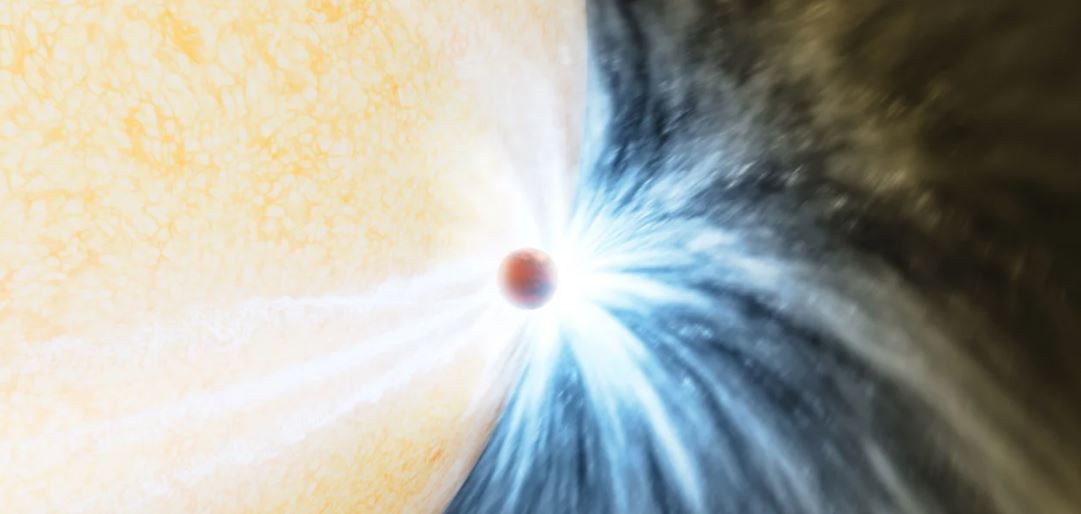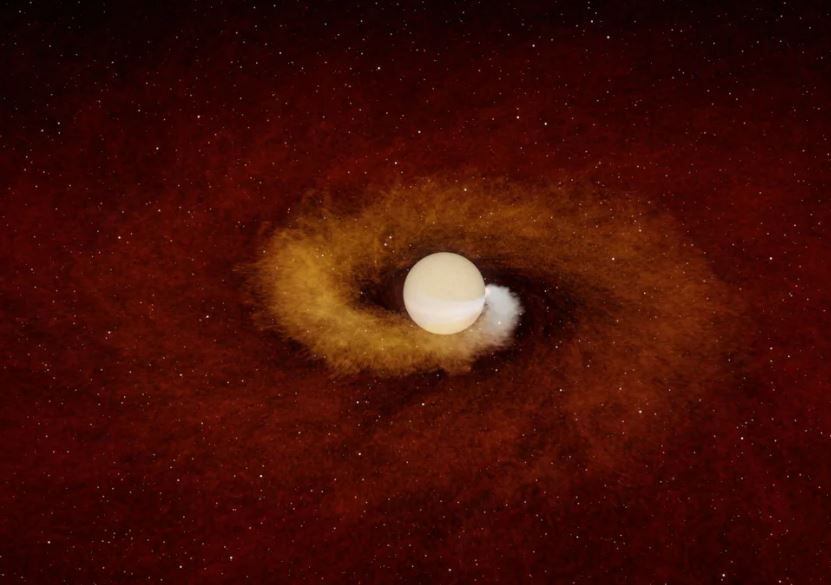Although astronomers have observed planets before and after being engulfed by a star, this is the first time that they have witnessed a planetary demise.
The team of scientists from Massachusetts Institute of Technology, Harvard University, and the California Institute of Technology revealed that the solar system's planets would eventually be engulfed by the sun, which is something that study lead author Kishalay De had learned about in high school.
The star swells to a million times its original size as it runs out of fuel, and astronomers observed this as a bright flash, followed by a more prolonged and colder signal that they attributed to the star consuming a planet.
De, in a press release, described how he had noticed a star that brightened 100-fold within a week, which was an unprecedented stellar outburst in his experience.

The planetary destruction happened approximately 12,000 light-years away in the Aquila constellation and involved a planet equivalent to Jupiter's size, according to the researchers.
Although they witnessed the occurrence in May 2020, it took a year to comprehend what they had observed. De stated that "One of the critical pieces of evidence we were attempting to understand was that the outburst produced dust before and after the event, but it takes time for gas to cool down and for dust particles to condense."
As a result, the group had to wait to learn more about the properties of the dust, De explained.

The research results were published in the journal Nature on Wednesday.
The signal indicating the planetary demise was first detected in data from the Palomar Observatory in California. Kishalay De then searched for data on the same star from the Keck Observatory in Hawaii before gathering more information using an infrared camera at the Palomar Observatory.
R. Hurt/K. Miller/Caltech/IPACThe infrared data gathered was so astonishing that it caused De to fall off his chair, as it suggested that the star might have been merging with another star. Nevertheless, after further analysis using readings from NASA's infrared space telescope, NEOWISE, it was revealed that the star was actually consuming a planet.
De explained that historically, it has been very difficult to obtain this type of infrared data because infrared detectors are expensive, and it is challenging to construct large cameras capable of taking repeated pictures of the sky.
However, with several new instruments coming online in the next decade, De hopes that we are on the cusp of a revolution in infrared astronomy that will enable us to repeatedly discover similar events.
R. Hurt/K. Miller/Caltech/IPACDe hopes to increase our understanding of such phenomena in the future.
De stated, "One of the key features that we identified was the persistent infrared glow following the optical outburst." He further added, "With the expectation of extensive infrared surveys to be available in the near future, we anticipate utilizing the infrared radiation as a method to detect every planet as it is being engulfed in our galaxy."
According to researchers, our planet will suffer a similar fate, but it will not happen for another five billion years.
De stated in the press release, "We are witnessing the Earth's future. If some other civilization was observing us from 10,000 light-years away while the sun was engulfing the Earth, they would see the sun suddenly brighten as it ejects some material, then form dust around it, before settling back to what it was.






